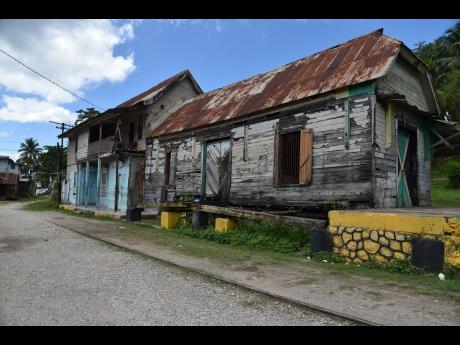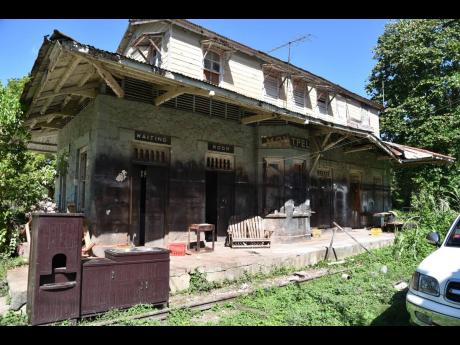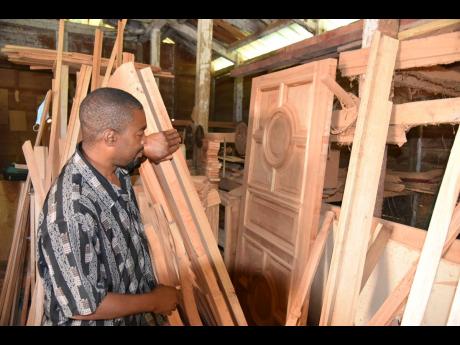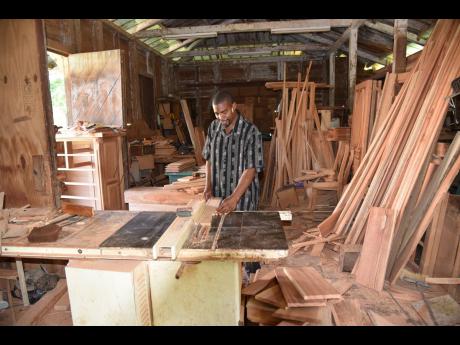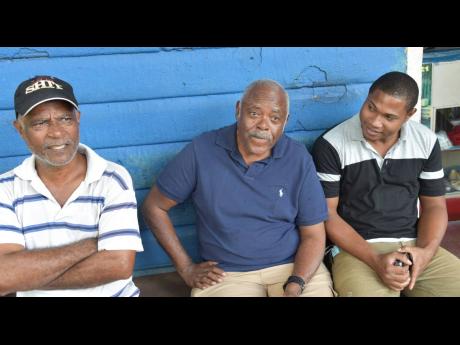St James anticipates train revival
Residents lament economic decline after service suspended in 1990s
Plans for the revival of the rail service in western Jamaica have stimulated a feeling of nostalgia among residents located along the scenic route from Montego Bay, St James, to Appleton Estate in Siloah, St Elizabeth, who crave for an impetus to resuscitate their local economy after the Government halted the service three decades ago.
Phase one of the project is expected to cost US$40.2 million and will see the rehabilitation of the 55-kilometre stretch, adjacent lands, buildings and supporting infrastructure through the hills of south St James into northwestern St Elizabeth then on to the northeastern plains of the Breadbasket Parish.
The second phase will be from Montego Bay to Montpelier, including the problematic Bogue Hill area.
Dave Wright, who has been operating a cabinetmaking business at the old Montpelier train station under a lease with the Jamaica Railway Corporation (JRC) since 2002, is among those anticipating the return of the trains.
“Even though I am going to lose this place, it is one of the greatest things that will happen for Montpelier,” Wright told The Sunday Gleaner last week. “I have to find somewhere to go, but I am just happy for the upliftment of my community.”
A number of other persons occupying JRC property will also have to relocate, including a family utilising the top floor of the main building under Wright’s care, and 55-year-old cabinetmaker Trevor Cole, who “took control” of a building after fire gutted his workshop in 2015.
“It was not easy to start over, so I came here and started picking up the pieces,” said Cole, who is from the neighbouring Mount Carey community. “It is when I tried to lease the building that I was told that the train will be returning. This will definitely uplift the community.”
Shook the community
Cole believes the decision to halt the service in 1992 crippled the economic life of Montpelier and other communities along the route.
“It shook the community because many persons depended on the service to put food on their table, whether directly or indirectly,” he said.
Travelling from the Montpelier station in the direction of the next stop, Cambridge, on the way to Catadupa, the steel line is overgrown with ferns, and trees have also sprung up between the rails.
Sections of the railway tracks have also been paved over at road crossings, while closer to Cambridge, several pig pens align a section of the track.
In another area, several wooden houses have been built close to the track, but a resident warned our news team against venturing too close.
“You need the JDF with you,” he offered, referring to the army.
The once-thriving Catadupa is now a ghost town plagued with many social ills as several residents have migrated to the urban areas in search of a better life.
Residents like Basil ‘Catadoc’ Edwards still reminisce on the earlier years, when he offered his wares to touring passengers.
The Catadupa train station is well kept – or in a much better condition than most seen by our news team – and Edwards remembers the days when the station yard and the far side of the road would be buzzing with traders.
“It was really good times,” said Edwards, who at one point had enrolled in a teachers’ college but did not compete the programme. “When train stopped, the community went down, so I am happy, but I just want to see it happening to bring our community back.”
The Reverend Leroy Gordon, chairman of the Catadupa Community Development Committee, also recalls the impact of the train service on the rural farming community.
“The tour from Montego Bay to Appleton Estate gave life to Catadupa. Catadupa was a vibrant community when the train service was operating, so it has been beneficial to us in several ways,” he told The Sunday Gleaner.
Jamaica’s railway service is one of the oldest in the world and has played a key role in passenger and freight transportation for the agricultural, mining and tourism sectors over the years. The tracks span 335km, traversing nine of the 14 parishes.
Mooted plans
The revival of the rail service was revisited after the Jamaica Labour Party returned to power in 2016, with talks with Hertzog Jamaica Limited, a subsidiary of the US-based Herzog International Incorporated, who mooted plans for the phased revitalisation of local passenger rail service, resulting in a non-binding memorandum of understanding between the investor and the State, but this arrangement was cancelled by December 2017.
A consortium led by Sandals Resorts International boss Adam Stewart is among those now expressing interest in the revival. But The Sunday Gleaner understands that the Government could demand a shared-use system, where the operator of the tourist train would pay a rental fee for the use of the lines.
Transport Minister Audley Shaw has vowed to resurrect the passenger railway service in the western end of the island. He said that the recently revived passenger service for students travelling from Linstead and Old Harbour to Spanish Town in St Catherine is part of a medium- to long-term plan to resume the use of the train as a key mode of transportation for freight, public passengers and tourism across the country.
“In terms of the railway, I just want you to know that I am taking a very, very serious and careful look at it, and it is not ‘if’ we are going to bring it back to Jamaica, it is ‘when’. The reason why we must do that is that history would frown upon us if we don’t,” he said at an event last month.
“The British brought the rail service to Jamaica, primarily to haul around sugar cane, but 30 years ago, we closed down Jamaica’s rail service. The tracks are still there, and we are going to reopen the service,” Shaw added.
The squatting issues along the lines could pose a challenge, however.
Bogue Hill, a squatter settlement in Montego Bay, is the biggest concern, said JRC CEO Donald Hanson, who was at the Catadupa facility, along with technical administrative assistant Randy Ebanks, when The Sunday Gleaner visited last week.
“On completion of the second phase, the tour by rail will begin and terminate near the cruise ship pier, and that is why we will start in Montpelier [and not Montego Bay] because the lines in the Bogue Hill area must be cleared. Other than that, there are no real issues,” Hanson said. “The train tour will make stops in Catadupa, Ipswich, St Elizabeth, and culminate with the Appleton Estate tours.”
The Ipswich tunnel is about 850 feet long and is located about a mile outside the community. The track is overgrown with weeds in several places, while the station’s dilapidated state bears testament to the decades of the inactive service.
But having heard many unfilled promises by successive governments, many residents are tempering their excitement, preferring to wait until they see the trains start rolling.
“Call me Doubtful Thomas,” said one man. “Mi hear that already. When it happen me can celebrate, but what we want is work, so if it happen and we can get work, we nice.”
The final phase of the plans will see the resumption of the Kingston to Montego Bay service, with only the Sandy Gully bridge a source of concern. The JRC CEO says the Port Antonio leg is not being contemplated at this time.
“I am confident that this will become a reality,” Hanson told The Sunday Gleaner. “Rail service is on the rebound.”

